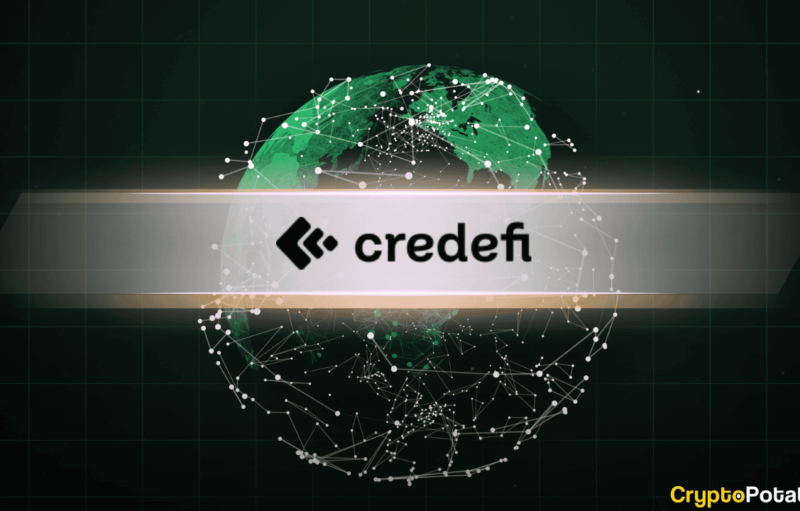[Featured Content]
Flash loans are an innovative financial lending tool that has a big impact on the world of finance. For the first time, loans do not need collateral, and borrowers and lenders bear zero financial risks when engaging in lending operations.
Such a trustless environment is achieved thanks to the use of blockchain technologies, as the entire cycle of a flash loan is implemented on a decentralized network. In decentralized finance or DeFi, lenders provide their funds for loans to arbitrageurs, who reward them with a small percentage of the profits generated from profitable transactions. If the transaction is unprofitable, the flash loan is simply reverted and the transaction is recorded as unfulfilled.
On instant lending platforms, users can make transactions with any amount of cryptocurrencies without even owning them and receive a percentage from profitable transactions. But is the situation with flash loans really so attractive, and is the entire process truly so transparent and secure?
Readers have probably already heard about a number of scandalous attacks on flash loan platforms. By resorting to audacious attacks, the malignant parties managed to withdraw assets worth more than $7.2 million from the BurgerSwap decentralized exchange.
In September of 2020, an unknown hacker withdrew $15 million from the Eminence DeFi project, created by André Cronje – the founder of the popular Yearn. finance decentralized financial protocol. The largest flash loan hack in 2021 occurred last February when the Alpha Homora protocol was drained using Iron Bank, Cream’s lending platform.
The combined effect of such hacks and losses is hitting the reputation of the DeFi sector hard and is deteriorating the trust that users bear for it.
Why is the system of flash loans so attractive and at the same time so vulnerable to the attacks of cybercriminals? What are the prospects of the flash loans market? We found out all the answers to these and many other questions in an interview with the CEO of Equalizer Finance Iulian Nita.
How many years have you been in fintech? Why did you choose DeFi as a direction of development?
“I have been working in the fintech ecosystem for more than 5 years, enjoying each moment and discovering new challenges each day. I have chosen the DeFi market because I believe in its disruptive potential. I believe that DeFi is the first real use case of blockchain technology and smart contracts. I am very confident that the DeFi market is here to stay and we are just at the beginning of an incredible journey.
Three years ago, I decided to shift my professional interest from the classical financial system towards decentralized finance, as I am a strong believer in this powerful technology that will definitely have a big social and economic impact.
I have started to realize that life can be better without banks and financial institutions that play the role of intermediaries. We are becoming a bankless nation! We are building the decentralized revolution and the big change is inevitable.”

This year, you started developing a multi-chain platform for flash loans. A large-scale project! There is so much buzz and confusion surrounding flash loans. What motivated you to start your project, considering all this?
“Flash loans are an incredible feature available only on the blockchain, something that is not possible in the centralized financial space. They are unique and possible only thanks to the capabilities of smart contracts.
After analyzing the current status of the flash loans market, I found out that its monthly volume exceeds $1 billion. Going deeper into the available data, I discovered that the main use of flash loans is arbitrage, a must-have component in the decentralized finance market.
Having a clear use case, a huge market size, and an exponential increase of the DeFi ecosystem, I brought to life the business idea of having a professional, multi-chain, dedicated flash lending marketplace, as a building block for a reliable DeFi market.”
Hacker attacks have severely tarnished the reputation of DeFi and flash loans. What are the main vulnerabilities of flash loans? Where are the risks real and where are they far-fetched?
“It is true that the media only publishes news regarding the negative aspect of the flash loans, as being used for attacks. The truth is that these attacks happen not because of the existence of flash loans, but because the protocols that are attacked have a vulnerability in their design.
We want to change this negative perception and want to show that flash loans are a very useful tool that is needed in the DeFi space. We are focused on designing the protocol in such a way that it cannot become a vector of attacks but will become a platform that will empower the lenders and the borrowers to profit from many opportunities already available on the DeFi market.”
What are the ways to overcome the vulnerabilities of flash loans? Is it possible to avoid or minimize the threat?
“It is clear that flash loans already exist and are here to stay. They have many positive use cases that are needed in decentralized markets, like arbitrage, collateral swapping, portfolio rebalancing, liquidations and self-liquidations. Therefore, we have to learn to accept them and to design or redesign DeFi protocols in a way that limits the risk. Many protocols on the DeFi market have already applied updates to eliminate the vulnerabilities of flash loans. Limiting the size of a flash loan or shifting the validation of the transaction to the next block are a few ways to avoid the threats.”
If the user decides to use this attractive financial instrument, what should they look for when choosing a platform? For instance, how is the Equalizer “protected”?
“The Equalizer platform is a marketplace, meaning that it has two categories of users:
Liquidity Providers are users who can stake their crypto assets in the listed vaults and receive passive income coming from the fees generated by the flash loan service. Additionally, there will also be a yield farming program deployed for the selected vaults that reward long-term liquidity providers with EQZ tokens. All the assets of the users are fully protected by the smart contract that is audited by a reliable audit company. On top of that, an additional insurance program will also be available. Therefore, lenders have the chance to put their capital at work without any risks and, more importantly, with no impermanent loss.
Borrowers are users who engage in arbitrage and trading strategies and have the chance to use a dedicated flash loan service that comes with clear advantages compared to its competitors. That includes the lowest fees on the market, standard and open-source interfaces based on EIP-3156, the lowest gas fees for transactions, the widest range of tokens to select from, as well as a scalable and multi-chain infrastructure. There is no risk for borrowers, as the basic principle of flash loans states that a transaction that is not profitable enough to pay back the borrowed asset will be reversed and all the operations undone. So, just try it, you have nothing to lose!
It looks too good to be true. So where’s the catch? The real profits come from the best arbitrage trading strategies!”
Do flash loans ever have a chance of becoming a completely secure financial instrument in the future, or should users always be ready to risk their own funds by providing them to one or another protocol? What are your predictions?
“I believe that flash loans are the most secure financial instrument on the DeFi market. Let me explain why. Flash loans enable anyone to borrow any amount instantly and easily with no collateral needed, but only if that amount is returned to the vault within the same block. If this does not happen, the whole transaction is reversed, and all the operations executed until that point are undone. This guarantees the safety of the funds in the vaults and the safety of the transaction. If the transaction is profitable, it will be successfully executed. In case the transaction is not profitable, it will be reversed.
I am confident that the flash loans market will continue to grow in parallel with the DeFi market. As I have already said, operations like arbitrage, liquidations, collateral swapping, and portfolio rebalancing are a necessity on the DeFi market, not a trick. That is why the goal of Equalizer is to equalize the markets in the decentralized finance ecosystem by building the first-ever, dedicated flash loan marketplace.
For more information, Check our platform and form your own conclusions about flash loans.”
Binance Futures 50 USDT FREE Voucher: Use this link to register & get 10% off fees and 50 USDT when trading 500 USDT (limited offer).
PrimeXBT Special Offer: Use this link to register & enter POTATO50 code to get 50% free bonus on any deposit up to 1 BTC.
The post appeared first on CryptoPotato






